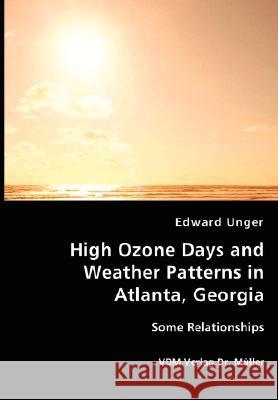High Ozone Days and Weather Patterns in Atlanta, Georgia » książka
High Ozone Days and Weather Patterns in Atlanta, Georgia
ISBN-13: 9783836437585 / Angielski / Miękka / 2008 / 80 str.
Tropospheric ozone pollution is a serious one, based on studies from all parts of the globe, and because of ozones adverse effects on the health of plants and animals. Numerous studies indicate a relationship between ozone concentration and weather systems. The Atlanta, Georgia region is one urban area where, to our knowledge, no environment-to-circulation analysis has been conducted. This work attempts to address this research deficiency in order to better understand high ozone levels in Atlanta. Data were collected from radiosonde and air quality monitoring stations in the Atlanta region for the summer months of 2000-2003. The data were subjected to statistical analysis, hypothesis testing, and mapping. The results of these procedures revealed a relationship between days with high ozone levels and both high and low-pressure patterns, and high ozone days and higher temperature and lower dew point temperature. The data indicated two groups of stations differentiated by geography, and also suggested transport of precursor chemicals as a factor at some locations.This work is addressed to physical geographers, environmental meteorologists, and other atmospheric scientists.











